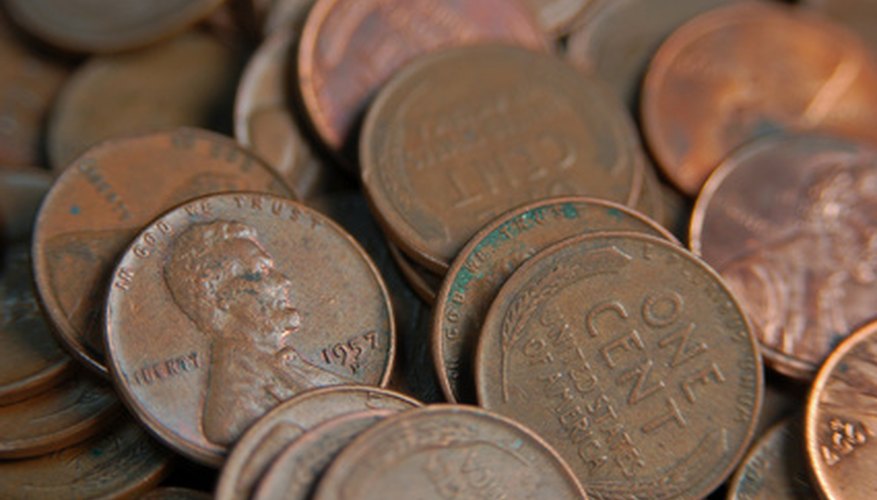Many methods can be used to clean copper pennies. Copper pennies, minted by the United States until 1982, are one of the most common coins in the world. Bright and shiny when new, they slowly oxidise because of exposure to air, eventually acquiring a dull brown or reddish brown colour. Tomato juice has long been a favourite of those attempting to remove this oxidised coating, known as tarnish, and many have used this method without knowing why. However, chemistry can give us an explanation.
Penny Cleansers
Over the decades, dozens of substances have been used to clean copper pennies. Sodas such as Coke and Pepsi, vinegar, lemon juice, milk, soy sauce, bleach, ketchup, ammonia, laundry detergent, baking soda and hot sauce are just a few of the substances. Tomato juice, however, seems to out-perform them all.
What makes a good penny cleaner
Two elements make a good penny cleaner. The first is a high acid content. A pH of less than 7, which is neutral, is critical. A range between 3 and 5 is good. Tomato juice has a pH of around 4.2. The other element that is important for a good penny cleaner is the presence of ions of hydrogen and chlorine. These ions allow the acid in the chosen cleaner to react with the copper oxide of the tarnish.
- Two elements make a good penny cleaner.
- The other element that is important for a good penny cleaner is the presence of ions of hydrogen and chlorine.
Penny-Cleaning Chemistry
Acids such as citric acid, acetic acid and hydrochloric acid dissolve the copper oxide, breaking apart its molecules and forming molecules of water and stable copper compounds, which are dissolved in the cleaner. This process removes a microscopically thin layer from the surface of the penny, leaving behind the shiny copper surface. The presence of simple salt acts as a catalyst for this reaction, providing sodium and chlorine ions that facilitate the acid's removal of the copper oxide.
Tomato Juice
Tomato juice works better than other solutions because it has a low pH, and also contains salt. Most other cleaners do not have any salt. If salt is added to vinegar or lemon juice, it cleans much better.
After cleaning
After cleaning, the penny must be rinsed well with water or the tarnish will return quickly. However, nothing will permanently prevent the penny from tarnishing, short of storing it in a vacuum.
